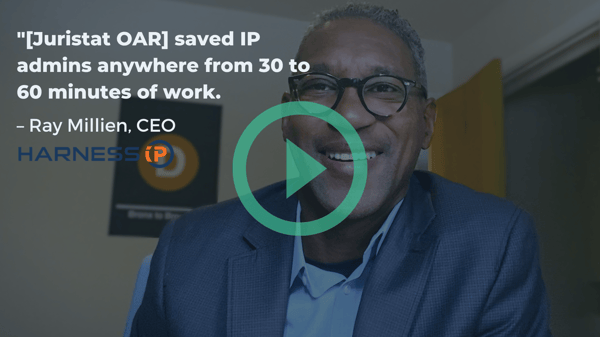In an increasingly turbulent business environment, IP firms need to take stock of what they can control, fortify, and improve. Now is the time to strengthen current processes with workflow automation and broaden your client base through competitive intelligence.
At the start of the COVID pandemic, law firms feared what lay ahead like every other business. To the surprise of many, the legal industry had little to worry about, performing exceptionally well during the public health crisis. In the 2021 American Law rankings, 74 of the top 100 firms reported increased revenue in 2020, with 42 achieving a gross revenue of $1 billion or more. Ranked firms saw gross revenue rise an average of 6.6% in 2020, with 21 firms in that category achieving revenue gains of 10% or more.
But, as the adage goes, "what comes up must come down." With rising costs and growing economic uncertainty, similar pandemic darlings, such as Netflix, Peloton, and Zoom, are struggling to maintain their last two years of growth. Some think Big Law will follow a similar path. “It certainly will be really hard to repeat any kind of growth,” said Lisa Smith, Principal at Fairfax Associates, when interviewed by Bloomberg Law. “Firms will struggle to match this year’s results, and that might be possible, though it’s going to be hard.”
After two years of profit, firms must strengthen their current processes to ensure an easy transition into an uncertain future. To do that, some are building up a suite of tools to increase efficiency, protect top-tier talent from burnout, and provide a more seamless client experience. Others are building out their current client base by examining their past successes at the USPTO and using that data to identify similar, prospective companies to engage.
These three strategies will help you streamline your current processes and develop a more robust competitive advantage in the IP landscape.
Minimize excess spending with workflow automation
After two years of remarkable growth, the stock market is struggling, with persistent inflation, chaos in Ukraine, and a cautious Federal Reserve hiking up interest rates. The business world is on high alert, and many companies are looking for ways to mitigate the risk of a possible recession. Law firms should be doing the same. And the first item to review is your current budget.
For years now, firms have been asked to be more efficient with fewer resources. Flat fees are becoming the norm, and unless firms can find ways to cut costs, profits per partner will continue to diminish.
Based on the 2020 Future Ready Lawyer survey, technology is the key driver of change:
- 82% of those surveyed predict that greater use of technology will change how they deliver service
- 63% expect big data and predictive analytics to impact the legal industry significantly
- 56% expect to increase spending on legal technology in the next three years
Technology is certainly changing the landscape, but it's paying off for those who embrace it. In the report, 62% of firms focusing on technology report their profitability increased over the prior year. When it comes to increasing profitability, nothing curbs excess spending quite like workflow automation. Automation, like Juristat’s suite of tools, speeds up menial tasks, ensuring your staff can take on more impactful, profitable work. For example, paralegals at Harness IP save as much as 60 minutes on each office action response with Juristat OAR, freeing up their day for other important assignments.
Reinvesting that time into more qualitative measures of success, like client relationship management, market research, or case preparation, is how your firm takes on a more active, integral role in your clients' success. And happier clients lead to more money for your firm and its stakeholders.
Keep top-tier talent by streamlining complex processes
You know the value of a good employee. When someone is productive, dedicated to the work, integral to your community, and mindful of process improvements, you don't want to lose them due to workplace burnout or external recruitment.
More than 33 million Americans have already quit their jobs since the spring of last year, and over 40% of workers are also considering taking part in this "Great Resignation." The legal industry has not been immune. According to the U.S. Bureau of Labor Statistics, more than 700,000 people in the professional and business services category — including lawyers and other legal professionals — quit their jobs between August 2021 and December 2021.
Kate Tompkins, Director of Practice Management at Lathrop GPM, previously told us that “talent recruitment and retention are two of the most significant challenges facing the legal industry today.” Staff retention should be a priority, especially in our competitive job market. Law firms and in-house teams need to explore options to invigorate their current workforce while attracting talented new hires.
The most effective way to ease pressure on your existing team and make the most of limited staff is to invest in workflow automation. In a 2019 Fortune article, Michael Chui, Ph.D., a partner at McKinsey Global Institute (MGI), says that half of the tasks people perform at work could theoretically be done by technology that exists today. Additionally, roughly six out of 10 jobs are made up of 30% or more tasks that can be automated. With a simpler workflow, less time dedicated to menial tasks, and more time to invest in professional development, employees feel more fulfilled and invested in their employer's success.
Focus business development with competitive intelligence
In times of uncertainty, nothing sets you up for success like a stable book of business. Building up your client base now can help establish a sustainable competitive advantage for years to come.
How do you best maximize business development efforts with limited resources? Be selective. Target your efforts.
With access to competitive intelligence analytics from Juristat, you can identify which technology areas your firm excels in and then target your marketing efforts toward companies operating (and underperforming) in those areas. In addition to reducing overall marketing costs, you may discover new business opportunities you'd have otherwise overlooked.
And don't rely on canned client pitches as a way to save a buck. The more strategic move is to do just the opposite: tailor your marketing, but be highly selective. Crafting a data-driven RFP may take more time, but these efforts to personalize your pitch to a company's specific needs are likely to pay off with a new client.
After two years of unexpected success, avoid resting on your laurels. Those who are quick to act on signals of change will thrive, and as Bob Dylan once said, "I feel a change comin' on." By following these three steps, you can protect your firm from an unknown future, ensuring a sustainable competitive advantage, and an adaptable company culture that can weather any storm.
Curious to see how Juristat can streamline your team workflow or strengthen your next client pitch? Explore our solutions with a quick demo.
(gradient).webp)


